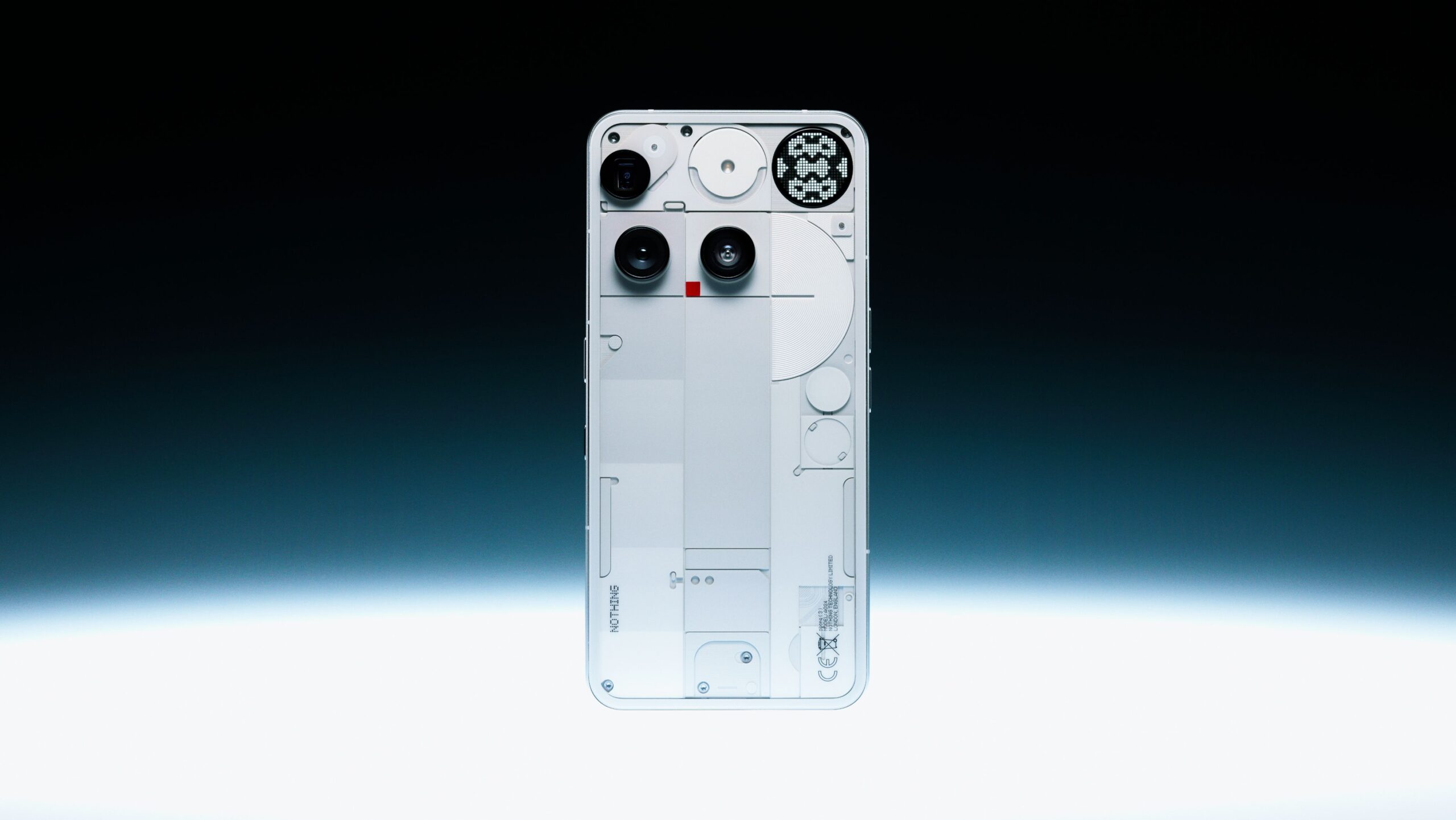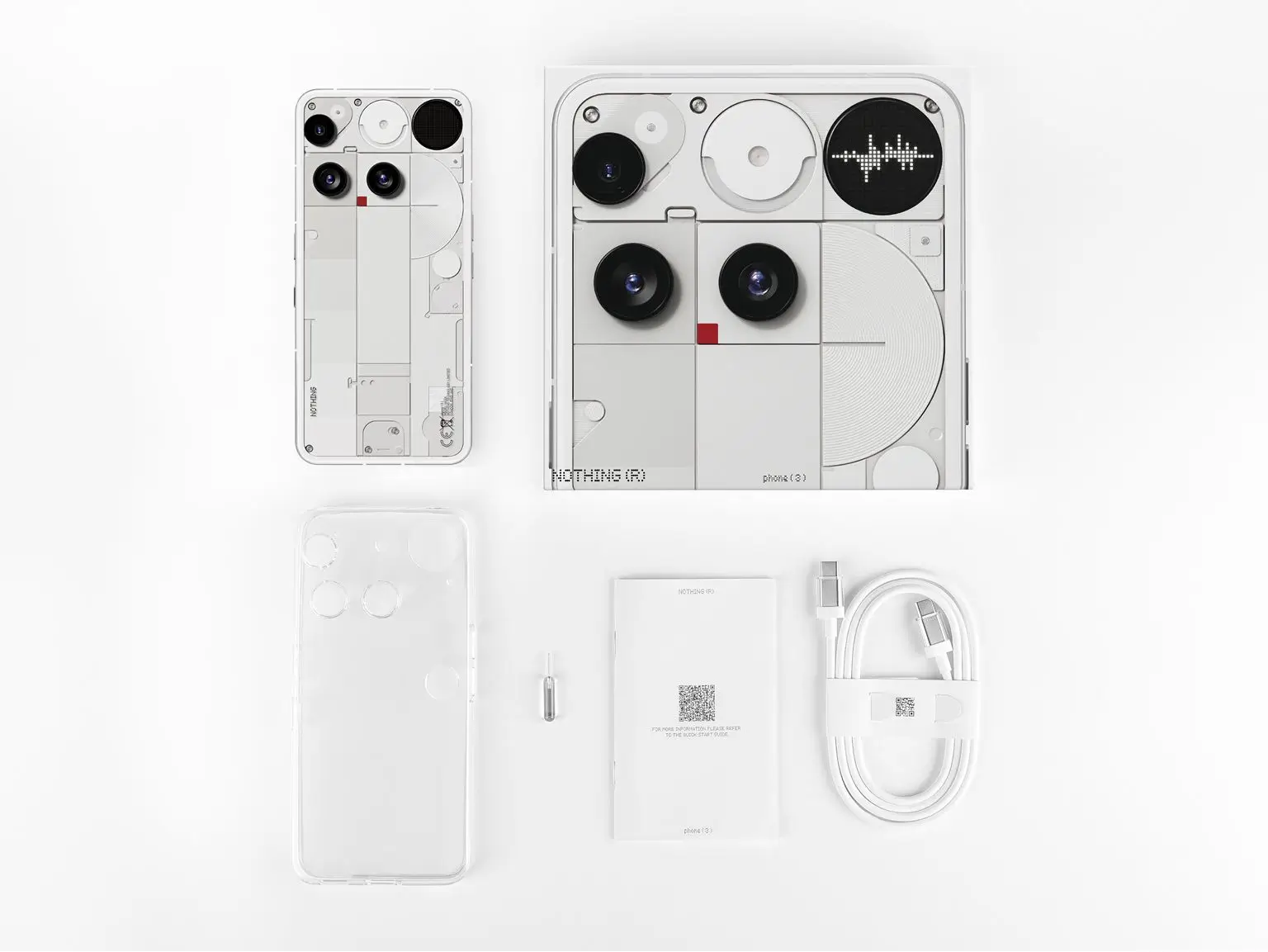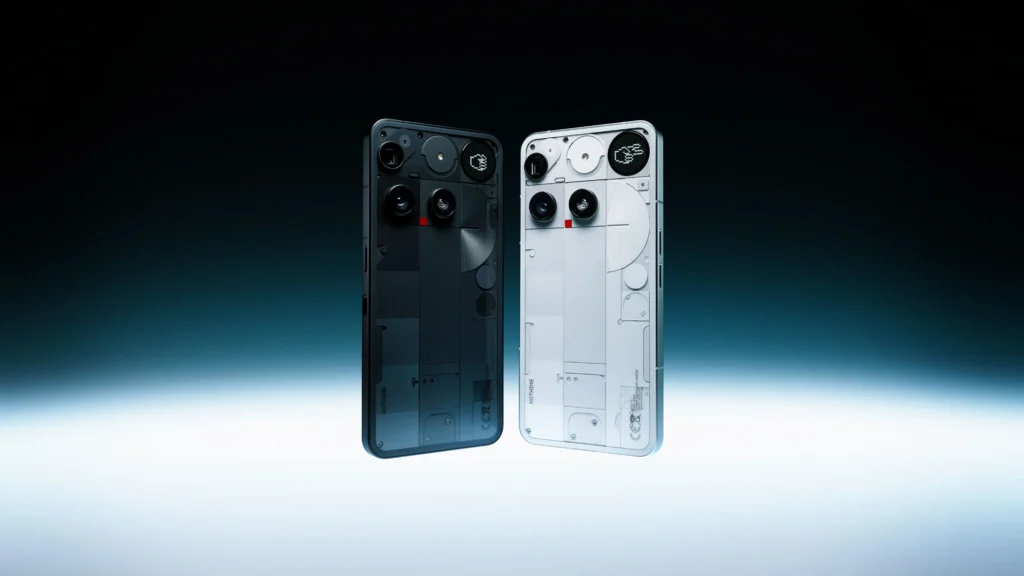You’ve probably heard the buzz: Nothing Phone 3 is finally here, and it’s not just another quirky design experiment. This time, Nothing is entering the flagship arena, going toe-to-toe with tech giants like Apple and Samsung.
But here’s the million-dollar question — at $799, does it have what it takes to stand against the iPhone 16 and Galaxy S25? Let’s dive deep Nothing Phone 3 Review.
Table of Contents
ToggleThe Journey to the Flagship
Back in 2020, Nothing entered the scene with a lot of hype and Carl Pei’s vision of a new kind of tech company. The first product was a pair of transparent earbuds that didn’t just sound decent but looked like something out of a sci-fi flick. Then came the Nothing Phone 1 and Phone 2, which focused on aesthetics, minimalism, and a uniquely stripped-back Android experience.
But until now, Nothing has stayed in the comfort zone of the mid-range market. And for good reason.
Launching a flagship phone isn’t just about adding better specs. It means competing with companies that have billions in R&D, unmatched supply chains, and a global brand presence. So for Nothing Phone 3, this wasn’t just a spec upgrade — it was a philosophical and strategic leap.
The $799 Gamble: Going Against Giants
With a price tag of $799, the Nothing Phone 3 enters dangerous waters. It’s no longer a quirky alternative; it’s a direct competitor to:
- iPhone 16
- Samsung Galaxy S25
- Pixel 9
This is where most brands stumble. The question isn’t whether it’s good — it’s whether it’s better for the price than the giants who already dominate the flagship scene.
Design
Nothing built its brand on a transparent, minimal design language. The Phone 3 keeps that DNA, but adds some strange decisions that dilute its impact:
- The NFC coil is only half-visible
- There’s odd spacing between components on the back
- The dual camera module is misaligned, but only slightly, which somehow makes it worse
Instead of feeling polished, the rear design gives off unfinished prototype vibes. It’s not bad, but in the flagship category, it’s all about details. One misaligned line can change perception.

Build Quality: Premium, But Not Quite Elite
- IP68 water and dust resistance: Finally! A must-have in this price range.
- Aluminum mid-frame: Light and sturdy
- Gorilla Glass 7i on front: Here’s the caveat
Gorilla Glass 7i is more scratch-resistant than your average glass, but it’s still a mid-range alternative. Compared to Gorilla Glass Victus 2 (used by Samsung), it could shatter more easily during drops.
So while it’s protected, it’s not best-in-class protected.
Recording Light: Functional Innovation
This little red recording light is genius for those who care about:
- Privacy: Letting others know they’re being recorded
- Functionality: A quick check in meetings or interviews
It could be brighter, yes. But the idea is a win. It’s a subtle innovation you don’t get from the usual players.
The Glyph Matrix: A Big Swing
Say goodbye to the iconic glyph light strips. In their place, you now have:
- A dot-matrix panel made of 489 individual LEDs
- Capable of displaying small widgets (aka Glyph Toys)
- Used as a rear camera preview
The execution? Mixed.
It looks like something from a retro Game Boy. Charming? Yes. Cutting-edge? Not quite. Compared to full-color rear displays on other phones, this feels underpowered.
Glyph Toys: Fun, But Are They Useful?
You get widgets like:
- Clock and stopwatch
- Spin the bottle 🍷
- Rock paper scissors
- Battery percentage
- Leveling tool (community-built)
But here’s the thing:
- Who plays spin the bottle with a phone?
- Who checks the battery from the back while face-down?
It’s creative, but doesn’t solve real problems. The only actually useful feature is the rear camera preview for selfies.
Display: Gorgeous, Yet Compromised
Specs:
- 6.7-inch AMOLED
- FHD+ resolution
- 120Hz refresh rate
- Super bright and vibrant colors
But… it uses LTPS technology instead of LTPO. That means:
- Refresh rate only drops to 30Hz, not 1Hz like Samsung
- Less efficient = shorter battery life during idle tasks
To the eye? Stunning. To the battery? Not so much.

Performance: Not Quite a Powerhouse
- Snapdragon 8s Gen 4
- No visible advanced cooling system
On paper, it’s fast. But:
- Samsung’s 8 Gen 4 Elite crushes it with up to 40% better graphics performance
- For gaming, the Phone 3 struggles to keep up under extended load
For daily tasks? Smooth. For heavy gaming? Not ideal.
Battery: The Secret Weapon
Claimed: 5,500mAh (India) / 5,150mAh (Global)
It’s the same battery. Just different regulatory labels.
Compared to:
- Galaxy S25: 4,000mAh
- iPhone 16: ~3,200mAh
That’s a massive advantage.
Charging:
- 65W wired = 0 to 100% in under 45 minutes
- Wireless charging is available too
Nothing has clearly prioritized battery life and fast charging. And it pays off.

Audio: Passable, But Not Punchy
- Dual stereo speakers
- Loud enough
- Decent clarity
But compared to the iPhone or Galaxy S series:
- Less bass
- Slightly thinner sound profile
Great for everyday use, but not an audiophile experience.
Software: Minimalist & Clean
Running Nothing OS 3.5, based on Android 14
Highlights:
- No bloatware
- Clean, aesthetic UI
- Essential Space: A semi-useful task manager
- Essential Search: Like Apple Spotlight + Gemini AI
Ask it a question, solve math, or launch apps — fast.
Is it better than Samsung’s OneUI? No.
But it’s fresher, lighter, and beautifully restrained.
Update Policy: Impressive Commitment
- 5 years of major Android upgrades
- 7 years of security patches
While Samsung and Google lead with full 7 years on both, Nothing’s promise is still ahead of most Android brands.
Camera System: A Genuine Win
All sensors are 50MP:
- Main
- Ultra-Wide
- 3x Telephoto
- Front Selfie
Highlights:
- Detailed ultra-wide shots
- AI-enhanced Super Zoom
- Macro via telephoto lens = No need to get super close
In practice? Richer shots than Galaxy S25 in most lighting conditions.
The only downside? Slight over-processing in low light.


Nothing Phone 3 Pros & Cons
| Pros | Cons |
|---|---|
| Premium build, IP68 rating | Rear design feels unfinished |
| Unique features: recording light, Glyph toys | Glyph matrix still undercooked |
| Clean Android experience | Mid-tier performance under load |
| Excellent battery & fast charging | Display not LTPO; efficiency loss |
| All 50MP cameras, surprisingly versatile | Audio lacks depth compared to rivals |
| Long-term software support | No flagship-level thermal performance |
Final Verdict: Should You Buy It?
Nothing Phone 3 is an exciting, risky step forward.
Does it dethrone the iPhone 16 or Galaxy S25? Not quite.
But does it offer:
- A fresh take on smartphone design?
- Powerful cameras?
- Clean, clutter-free software?
- Long-lasting battery and fast charging?
Absolutely.
This is a phone for:
- Creative types
- Design lovers
- Android purists
- Every day, users who don’t need maxed-out power
If that’s you? Go for it.
If you’re a gamer or spec-chaser, you might want to look elsewhere.
FAQs
1. What makes the Nothing Phone 3 different from Phone 2?
The Phone 3 introduces flagship-grade internals, an IP68 rating, faster charging, and the new Glyph Matrix display.
2. Can I take rear camera selfies with the Glyph Matrix?
Yes! It acts as a tiny preview screen, making high-quality selfies from the main camera possible.
3. Is Nothing Phone 3 good for gaming?
Casual gaming? Yes. High-end AAA mobile games? Not the best.
4. Will the Nothing Phone 3 get Android 15, 16, 17, and beyond?
Yes! It’s promised 5 major Android updates and 7 years of security support.
5. Does Nothing Phone 3 have wireless charging?
Yes, it supports both wireless and reverse wireless charging.











